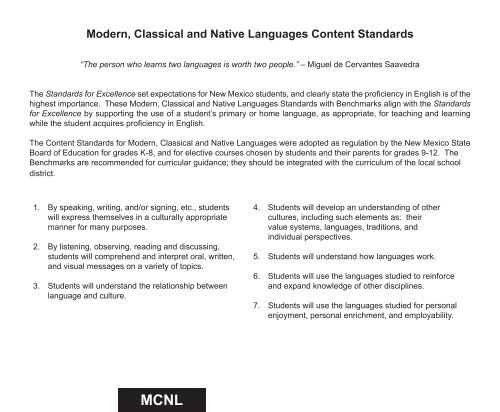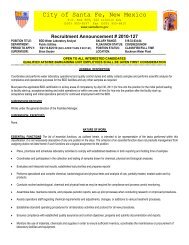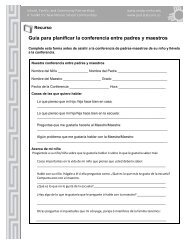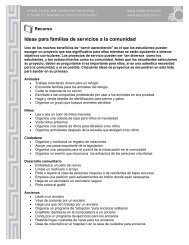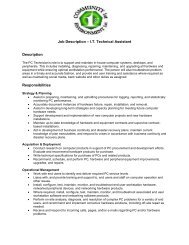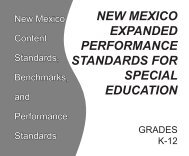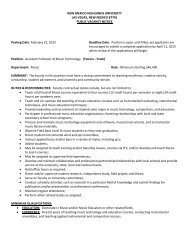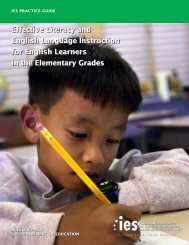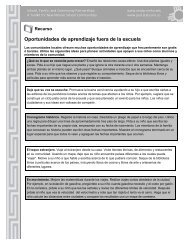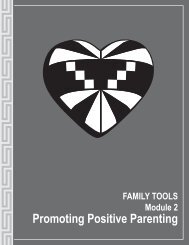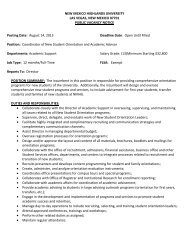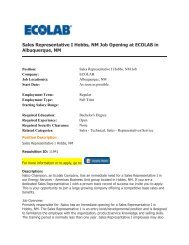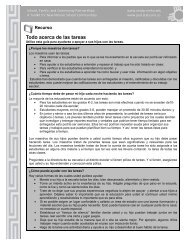MCNL - Center for the Education and Study of Diverse Populations
MCNL - Center for the Education and Study of Diverse Populations
MCNL - Center for the Education and Study of Diverse Populations
You also want an ePaper? Increase the reach of your titles
YUMPU automatically turns print PDFs into web optimized ePapers that Google loves.
Modern, Classical <strong>and</strong> Native Languages Content St<strong>and</strong>ards<br />
“The person who learns two languages is worth two people.” – Miguel de Cervantes Saavedra<br />
The St<strong>and</strong>ards <strong>for</strong> Excellence set expectations <strong>for</strong> New Mexico students, <strong>and</strong> clearly state <strong>the</strong> pr<strong>of</strong>iciency in English is <strong>of</strong> <strong>the</strong><br />
highest importance. These Modern, Classical <strong>and</strong> Native Languages St<strong>and</strong>ards with Benchmarks align with <strong>the</strong> St<strong>and</strong>ards<br />
<strong>for</strong> Excellence by supporting <strong>the</strong> use <strong>of</strong> a student’s primary or home language, as appropriate, <strong>for</strong> teaching <strong>and</strong> learning<br />
while <strong>the</strong> student acquires pr<strong>of</strong>iciency in English.<br />
The Content St<strong>and</strong>ards <strong>for</strong> Modern, Classical <strong>and</strong> Native Languages were adopted as regulation by <strong>the</strong> New Mexico State<br />
Board <strong>of</strong> <strong>Education</strong> <strong>for</strong> grades K-8, <strong>and</strong> <strong>for</strong> elective courses chosen by students <strong>and</strong> <strong>the</strong>ir parents <strong>for</strong> grades 9-12. The<br />
Benchmarks are recommended <strong>for</strong> curricular guidance; <strong>the</strong>y should be integrated with <strong>the</strong> curriculum <strong>of</strong> <strong>the</strong> local school<br />
district.<br />
1. By speaking, writing, <strong>and</strong>/or signing, etc., students<br />
will express <strong>the</strong>mselves in a culturally appropriate<br />
manner <strong>for</strong> many purposes.<br />
2. By listening, observing, reading <strong>and</strong> discussing,<br />
students will comprehend <strong>and</strong> interpret oral, written,<br />
<strong>and</strong> visual messages on a variety <strong>of</strong> topics.<br />
3. Students will underst<strong>and</strong> <strong>the</strong> relationship between<br />
language <strong>and</strong> culture.<br />
4. Students will develop an underst<strong>and</strong>ing <strong>of</strong> o<strong>the</strong>r<br />
cultures, including such elements as: <strong>the</strong>ir<br />
value systems, languages, traditions, <strong>and</strong><br />
individual perspectives.<br />
5. Students will underst<strong>and</strong> how languages work.<br />
6. Students will use <strong>the</strong> languages studied to rein<strong>for</strong>ce<br />
<strong>and</strong> exp<strong>and</strong> knowledge <strong>of</strong> o<strong>the</strong>r disciplines.<br />
7. Students will use <strong>the</strong> languages studied <strong>for</strong> personal<br />
enjoyment, personal enrichment, <strong>and</strong> employability.<br />
<strong>MCNL</strong>


